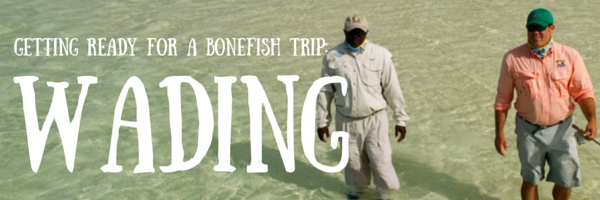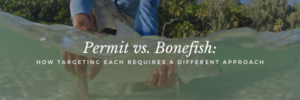Learning how to properly wade is one of the most important parts of bonefishing, especially if you re eager to spend time chasing these fish on foot. Bonefish spook easily and they can sense vibration and noise from great distances. Fortunately, there are several things that you can do to improve your wading skills before you set out for your trip.
The Proper Walking Technique
Flats with hard bottoms require soft steps that place you on the ball of your foot. Practice picking your feet up in a vertical motion and avoid striking the flat surface with your heels. This will minimize splashing sounds and make your movements difficult to detect.
Exercise
Wading requires a lot of physical effort and can quickly become draining if you are not in good shape. Making controlled, vertical steps that create minimal disturbance can be a real effort, especially if you wind up on an extensive flat that requires hours of wading. Tired people are more likely to drag their feet, hit flat bottoms with their heels and make lots of splashing sounds that scare bonefish away. Thus, the best way to bone up for your trip is by spending plenty of time on exercises that build up your cardiovascular and muscular endurance. If you are in good physical shape for your bonefishing trip, making a stealthy approach will be a whole lot easier.
Get The Right Gear
Not only do you have to learn how to move through the water inconspicuously, but you also have to make sure that you can tote all of your gear with you while doing so. Invest in a versatile pair of wading boots that will work well on hard bottoms and on soft and uneven bottoms. The best options will have sufficient arch support and adequate flexibility in the soles for getting a good range of motion at the mid-portion of the foot. You will also need durable socks that are designed to keep sand and gravel out. You must always wear socks or you will quickly get blisters from the abrasive nature of the sand or gravels. Once you get these things, spend some time breaking them in by walking around the house. This will limit the likelihood of sore arches and blisters.
It is also important to have a sturdy, lumbar pack that can hold all of your fishing essentials. You will need to stow your leader and flies, water bottle, camera, hook file, nippers and more. This pack should be lightweight and easy to carry.
Manage Your Line
Your line should always loop behind you while you’re wading. This is the easiest and surest way to manage the line. Start by stripping off a line length that you can comfortably cast. As you wade, leave this loop behind you. Once you set your sites on a target, pile the loop in close by your feet to reduce drag and then cast. Practice this technique on various surfaces before heading out for your trip.
Keep The Fish Swimming Towards You
It is also important to practice wading in such a way that the fish are swimming right at you, rather than away from you. Bonefish often have established swimming paths on flats. If you spot one fish, pay attention to where the fish came from and expect to see more in short order. Keep this in mind when heading out on a wading expedition.
Practice Casting
As you work on your wading techniques and build up endurance and strength, you also want to practice your casting. Work on versatility and accuracy. Although distance, 35 to 40 feet, and speed are important, focus on casting at different angles and on casting both into the wind and with the wind at your back.









